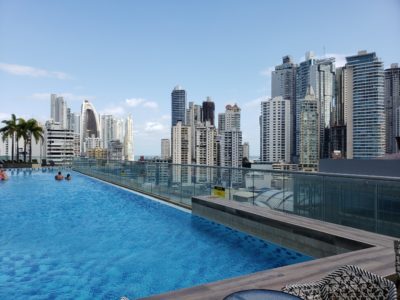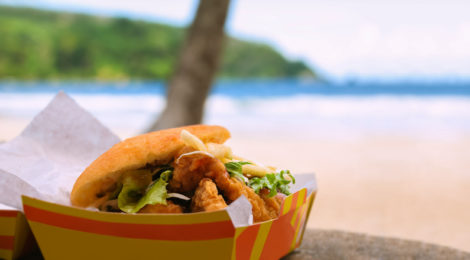With Panama being such a hot expat destination, it is only natural that there is a list of questions about moving to Panama. There is truly something for everyone in Panama. Located in Central America, the country boasts a sought-after location; gorgeous beaches, ideal weather, and lots of culture and history. We searched through various Black expat groups to figure out the top questions. In this article, Travel Noire answers Black travelers’ questions about moving to Panama.
1. What are the favorite locations for Black expats to live?

The most popular areas for Black expats are Panama City for an exciting lifestyle (it is referred to as the Miami of Central America), Coronado/Gorgona for impeccable beach vibes, and Boquete/David for towns and nature. Expats looking to experience the wild and coconut-infused Caribbean island life in Panama enjoy Bocas del Toro.
2. Where are the best areas for digital nomads?
Panama City and David are by far the best destinations for digital nomads considering working spaces and internet speeds. Digital nomads hoping to live by the beach also choose Nueva Gorgona/Coronado. It is useful to know that quality, fast internet is offered in most places in Panama.
3. Is Panama a good option for retirement?

Panama is a known hotspot for retiring travelers. In particular, David is considered to be a top location for retiring expats. A combination of the affordability, diverse housing market, and great weather makes it a go-to location for expats.
4. How can I become a resident?
Panama is known for offering a variety of residency options. These differ depending upon whether you apply as a single person, a family, or as a dependent of an existing Panamanian resident. Some of the common residency visas include: the Retirees and Pensioners visa (Pensionado Visa), the Friendly Nations visa, and the Married with a Panamanian visa.
5. How can I obtain citizenship?

Panamanian citizenship (or naturalization) is granted to permanent residents who have fulfilled the minimum residence requirement (3 to 5 years) from the moment the Panama Immigration Office issues the resolution to certify permanent residence.
There are three official routes/alternatives to becoming naturalized:
- Live in Panama for 5 years as a permanent resident
- Live in Panama for 3 years as a permanent resident, be married to a Panamanian, or have Panamanian children with a Panamanian parent
- Be born in a Latin American county or Spain
You can find out more information here.
6. What is the currency in Panama?
The official currency of Panama is the Panamanian Balboa, but US dollars are widely accepted and have the same exchange rate.
7. What is Panamanian gastronomy like?

It depends massively on the region you visit! One thing to note is that Panama is a richly diverse country with lots of international influence. The gastronomy has evolved to reflect that. Expect rice and beans and fried fish in the Caribbean, for instance. Otherwise, you’ll find plenty of ropa vieja (a well-known shredded beef dish), delicious empanadas of all flavors, and an iconic Balboa to wash it down. Be sure to get patacones (a dish made from fried, smashed and refried green banana) wherever you are.
Related: Founder Of Black Expats In Panama Shares What Life Is Really Like In Panama





